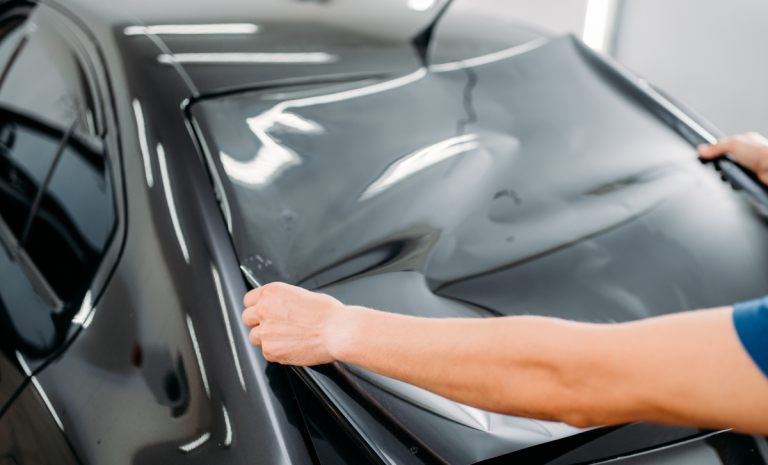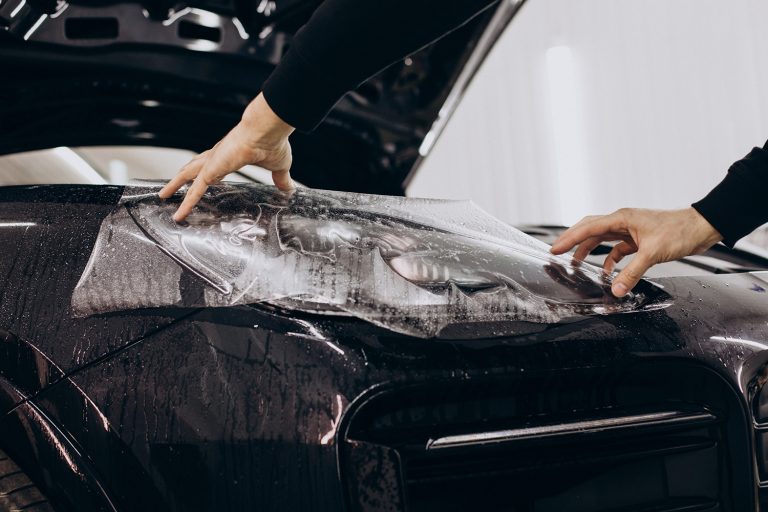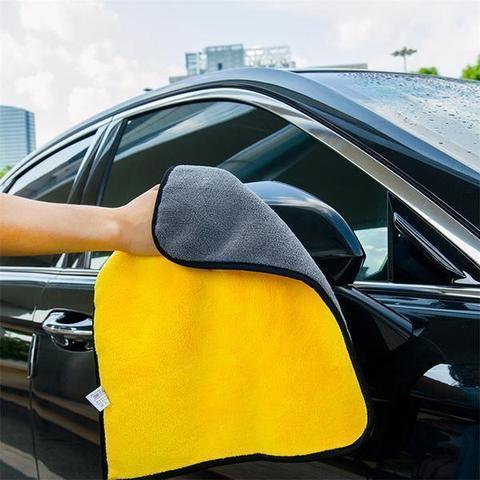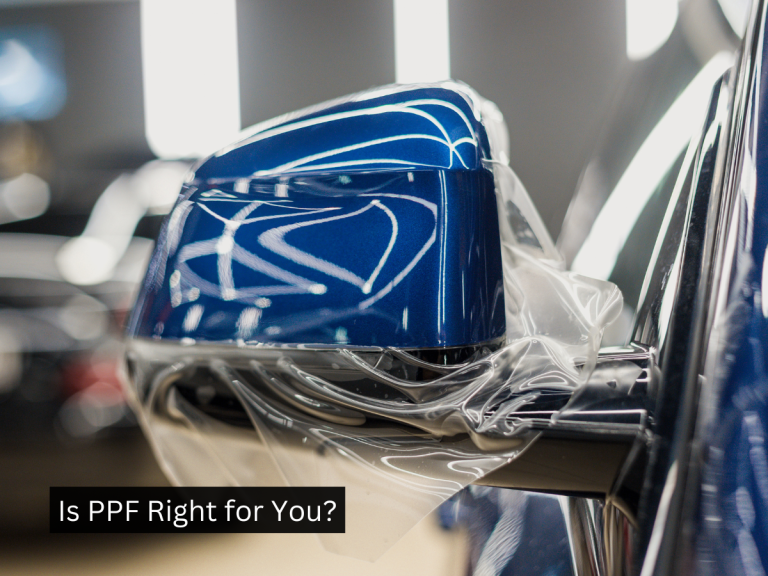Car Window Tint Percentages Explained
Car window tint percentages can be confusing, but once you understand how they work, it’s much easier to choose the right one for your vehicle — and to make sure you’re staying legal.
If you’ve ever heard someone say, “I’ve got 20% tint on my car,” you might wonder what that actually means. Find out below so you can speak knowledgably about car window tint percentages.
What Does Car Widow Tint Percentage Mean?
The percentage refers to VLT (Visible Light Transmission). In simple terms, it’s the amount of visible light that passes through the window.
- 50% tint means the film lets 50% of visible light through.
- 20% tint means only 20% of visible light passes through — so it looks much darker.
- 5% tint is limo-dark and almost blacked out.
The lower the number, the darker the tint.
Real-World Examples
Here’s how those car window tint percentages look and feel in everyday driving:
- 70% Tint (Light): Looks almost clear but blocks UV rays and heat. Similar to lightly tinted sunglasses. Perfect for drivers who want protection without a dramatic look.
- 35% Tint (Moderate): Dark enough to provide privacy and block glare but still easy to see through. Think of this as the “business casual” of tint.
- 20% Tint (Dark): Offers serious privacy — you can see out fairly well in daylight, but people outside struggle to see in. At night, visibility can be trickier.
- 5% Tint (Limo): Extremely dark. Almost no one can see inside the car. Drivers often pair this with lighter windshield and front side tints since night visibility is limited.
Legal Tint Limits
Here’s where it gets tricky: every state sets its own tint laws, and the rules can vary depending on which window we’re talking about.
- In many states, front side windows must allow at least 35% light through.
- Back side windows and rear windows are often allowed to be darker (20% or even 5%).
- Windshields usually can’t be tinted below the manufacturer’s “AS-1 line” (a small mark near the top of the glass) except for a clear UV-protective film.
Example:
- Georgia: The legal limit is 32% VLT on front side windows, while the rear windows can be as dark as you want.
- California: Requires 70% VLT on front windows, which means only very light tint is allowed.
- Florida: Allows 28% on front windows and 15% on rear side windows.
Why Tint Laws Matter
It’s tempting to go dark for style or privacy, but there are real consequences if you ignore tint limits:
- Tickets & Fines: Police can issue citations, and fines vary by state.
- Inspection Failures: In states with yearly inspections, your car could fail if the tint is too dark.
- Safety Issues: Darker tints can reduce nighttime visibility, making it harder to see pedestrians or cyclists.
Choosing the Right Tint for You
When picking a tint, think about:
- Your state laws — always check before installing.
- Your needs: Do you want UV/heat protection, privacy, or just style?
- Your comfort at night: If you drive often in dark areas, a lighter tint might be better.
Final Thoughts
Understanding tint percentages is all about knowing how much light gets through your windows. A higher percentage = lighter tint, and a lower percentage = darker tint. By balancing style, comfort, and legal requirements, you can pick a tint that looks great and keeps you out of trouble.
If you’re unsure, start lighter — you can always add a darker tint later, but removing it is a pain.
Read more about the benefits of ceramic car window window tinting vs regular film tinting here.
Comparison Chart
| Tint % | Appearance | Visibility Inside | Best For |
|---|---|---|---|
| 70% | Almost clear, very light tint | Easily visible | UV/heat protection without changing look |
| 50% | Light smoke appearance | Visible with some shading | Balanced privacy and comfort |
| 35% | Medium tint, noticeable shade | Moderate privacy, clear enough inside | Most popular, legal in many states |
| 20% | Dark, strong privacy look | Difficult to see inside during day | Privacy and style, rear windows |
| 5% | Very dark, limo style | Nearly impossible to see inside | Limo look, rear passenger privacy |








